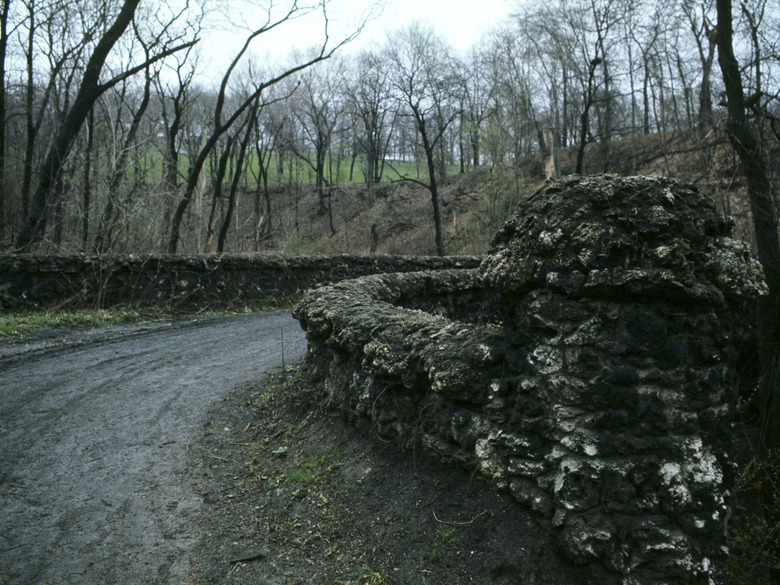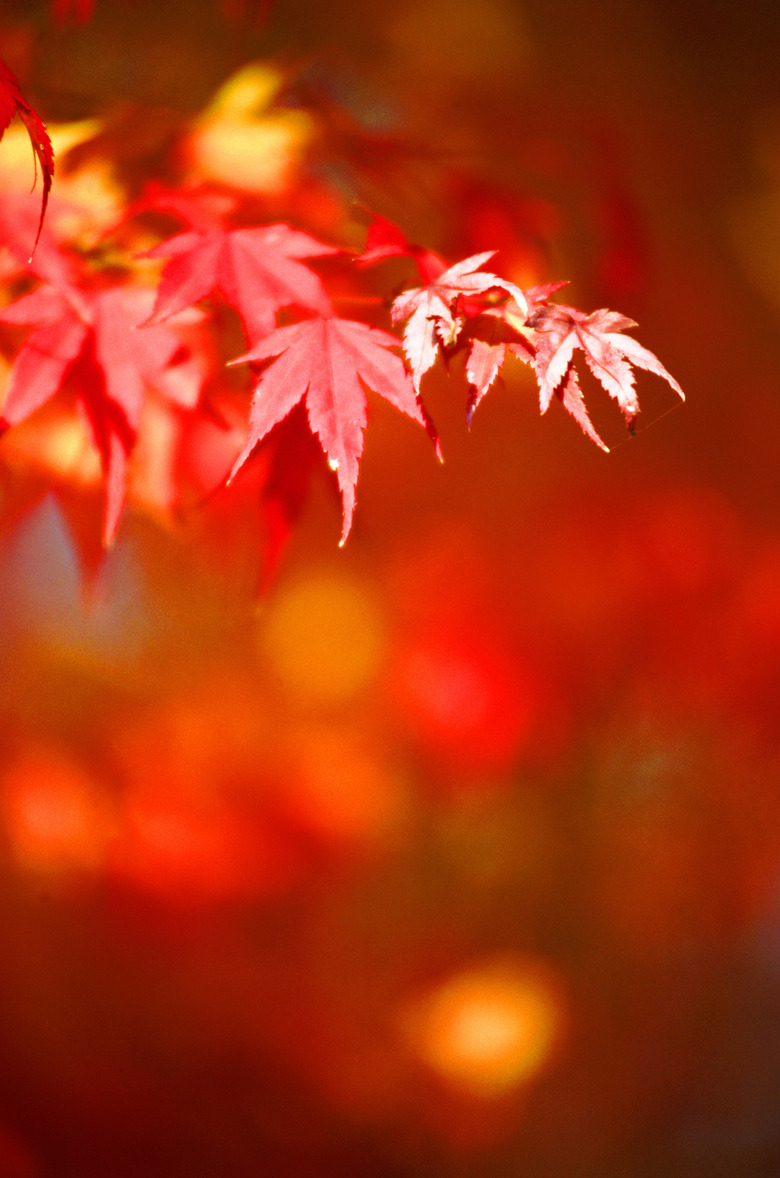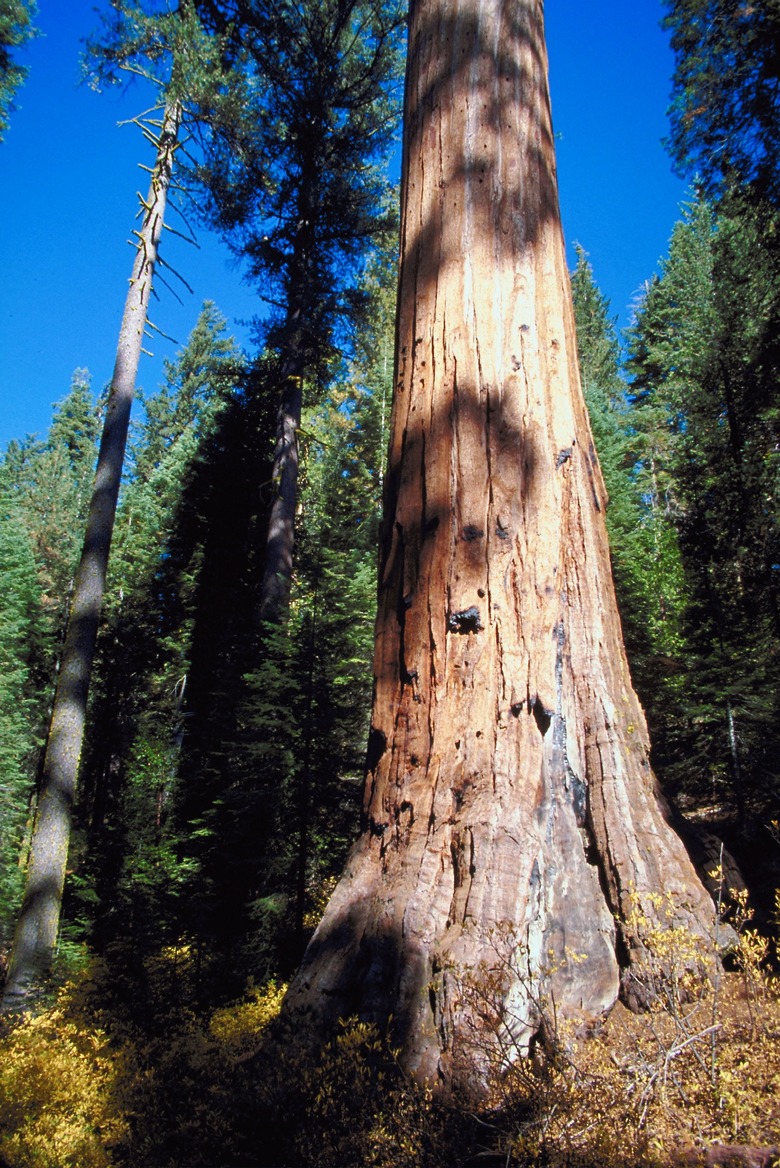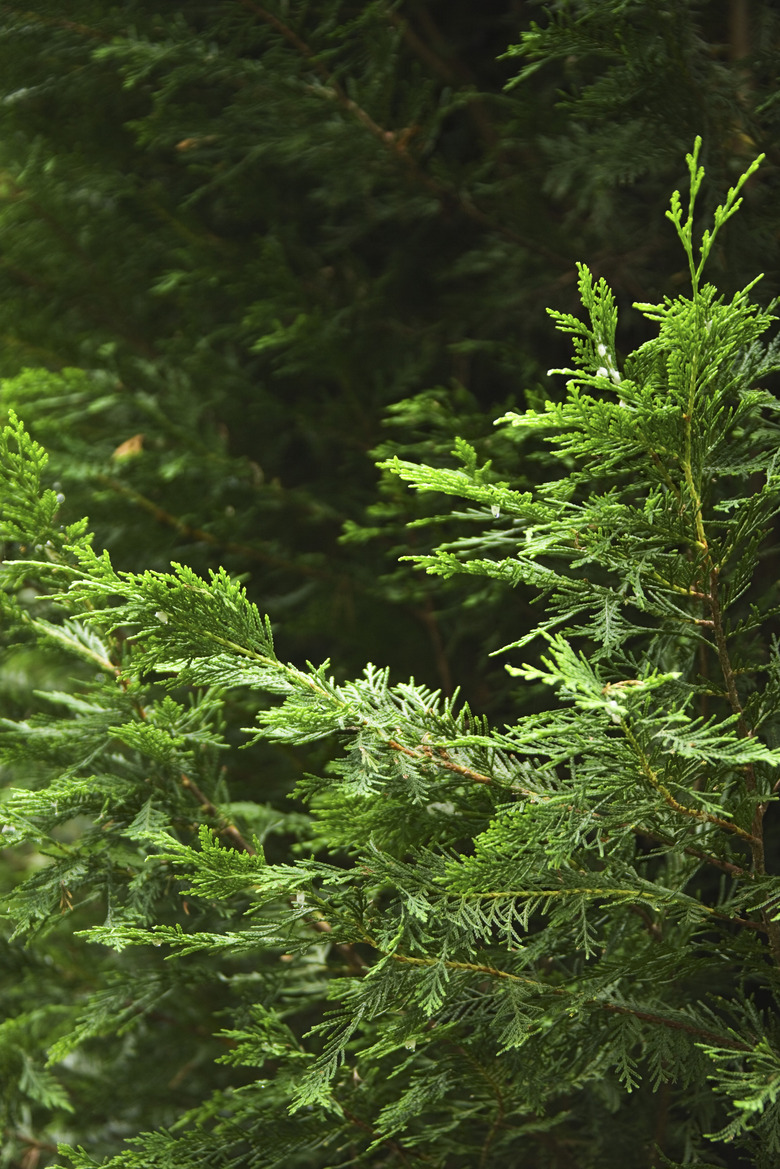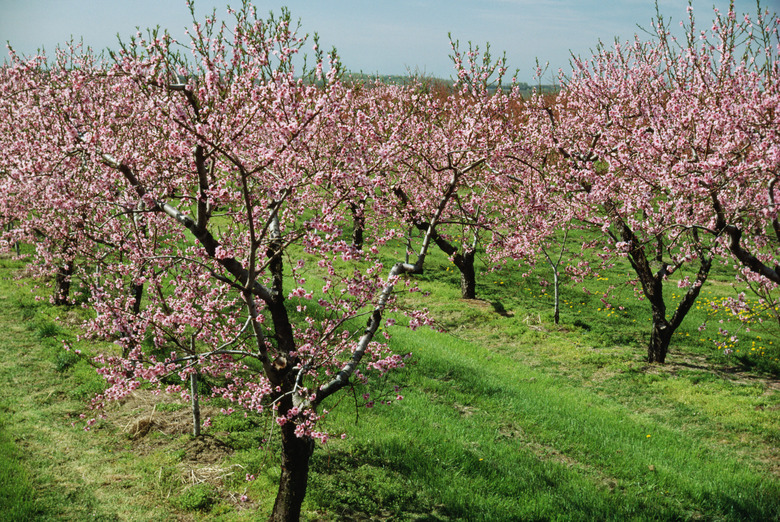What Types Of Trees Are Good For Retaining Walls?
Planting trees near a retaining wall softens the look of the wall and adds color and texture to the space, but the wrong kind of tree could cause problems in the future. Tree roots are strong and relentless. Like tree trunks and branches, tree roots grow both longer and wider each year, and can push up sidewalks and compromise retaining walls. When planting trees near a wall, take into account the tree's mature canopy size, add 18 inches to it, and plant the tree that far away from the wall. This will avoid roots compromising the wall and give the tree room to breathe.
Understory Trees
Step 1
Understory trees grow in the level below the forest canopy. They are small by nature, and fit into an area where space next to the wall is limited. Flowering dogwood (Cornus florida), which is hardy in U.S. Department of Agriculture plant hardiness zones 5 to 9a, tops out at 25 feet and has a canopy spread of 30 feet. Eastern redbud (Cercis canadensis), USDA zones 4b to 9a, is a similar size and flowers bright purple flowers in the early spring. The Japanese maple (Acer palmatum), USDA zones 6 to 8b, comes in varieties with green, red or purples leaves that often turn brilliant colors in the fall.
- Planting trees near a retaining wall softens the look of the wall and adds color and texture to the space, but the wrong kind of tree could cause problems in the future.
- When planting trees near a wall, take into account the tree's mature canopy size, add 18 inches to it, and plant the tree that far away from the wall.
Canopy Trees
Step 1
Canopy trees reach the forest canopy and are generally tall and broad with a wide root structure. Choose shorter canopy trees with a taproot system instead of a lateral root system. White walnut (Juglans cinerea), USDA zones 3b to 7a, is a tall but narrow tree with a deep taproot. Ginko (Ginko biloba) USDA zones 4 to 8a, is a living fossil with an interesting shape that is good for street planting. Littleleaf linden (Tilia cordata), USDA zones 3b to 7a, is a tree with small, heart-shaped leaves.
Evergreen Trees
Step 1
To disguise a retaining wall year-round, evergreens are the trees to plant. Larger evergreens often have wide and aggressive surface root systems, so stick with the smaller ones. American holly (Ilex opaca), USDA zones 5 to 9, is a broadleaf evergreen that produces bright red berries in winter. Eastern red cedar (Juniperus virginiana), USDA zones 2 to 9, has a pyramid shape, with branches all the way to the ground. Canadian hemlock (Tsuga canadensis), USDA zones 3 to 8, is a slow-growing screening tree. All three can be pruned and kept to whatever size is needed.
- Canopy trees reach the forest canopy and are generally tall and broad with a wide root structure.
- Littleleaf linden (Tilia cordata), USDA zones 3b to 7a, is a tree with small, heart-shaped leaves.
Fruit Trees
Step 1
Fruit-bearing trees work well with retaining walls because they are small, produce showy flowers in the spring and sometimes edible fruit in the summer or fall. Crabapples (Malus X) USDA zones 3b to 8a, produce showy flowers, but the fruit is small and inedible. Common peach (Prunus persica), USDA zones 5 to 9, flowers pink and produces edible fruits. Sweet cherry (Prunus avium), USDA zones 3a to 7b, blooms white flowers and produces edible fruit. Please note that, for most fruit trees, only the fruit is edible. The rest of the plant is often poisonous.
References
- National Gardening Association: Flowering Dogwood
- National Gardening Association: Eastern Redbud
- National Gardening Association: Japanese Maple
- National Gardening Association: Gingko
- New York City Department of Parks and Recreation: Street Tree Approved Species List
- National Gardening Association: Littleleaf Linden
- Arbor Day Foundation: American Holly
- National Gardening Association: Crabapple
- National Gardening Association: Sweet Cherry
- National Gardening Association: Common Peach
